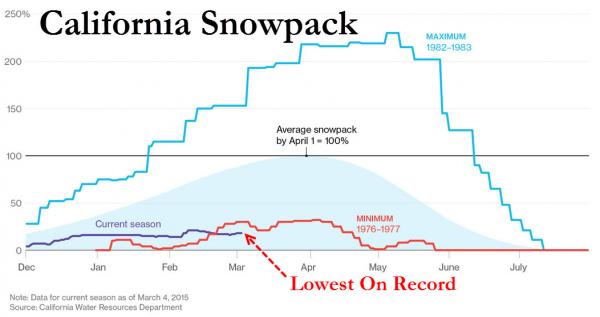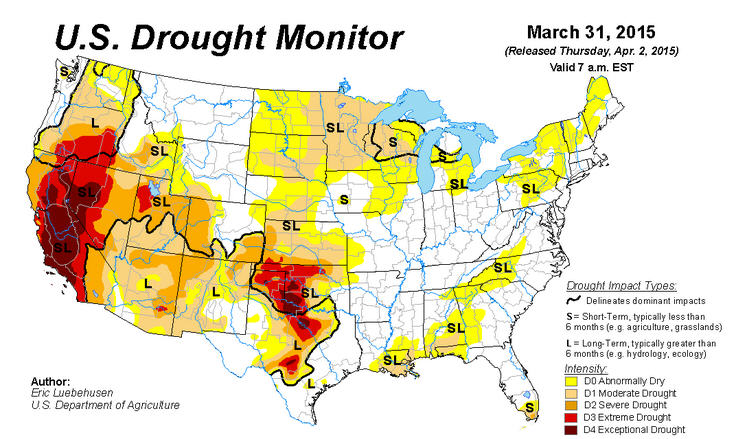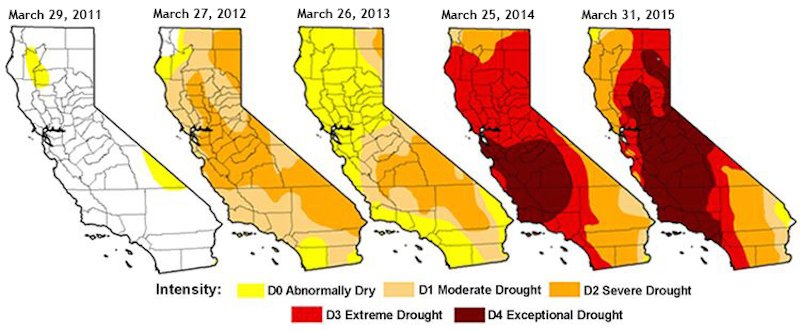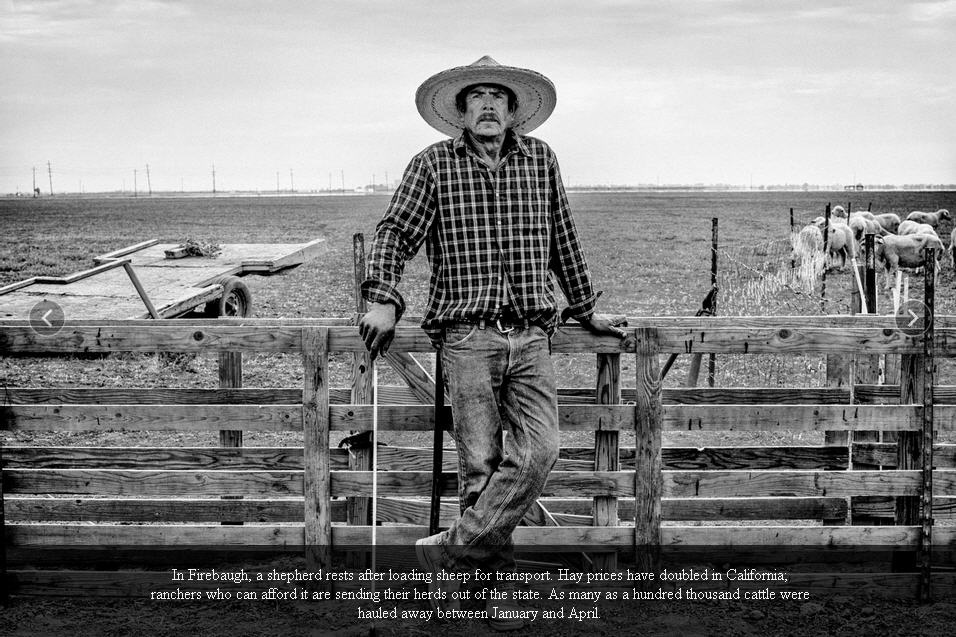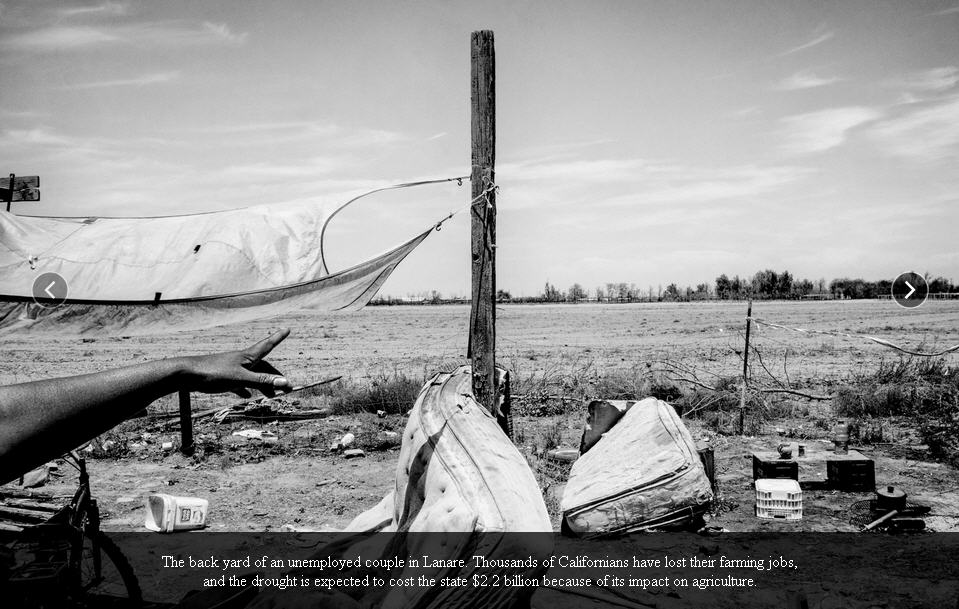To the World of 2024,
It is my hope and prayer that if you are reading my thoughts from April 2015 in 2024, that another crisis in my country and world today will have been resolved. This problem has been building over years, but in the last few has grown to one of the worst crisis of our day.
The crisis; the global supply of fresh water is in decline. This is not impacting merely third world nations, but my country, the United States.
California, THE most populous states in the US, has just issued its first executive order on mandatory water restrictions across the state due to one of the worst droughts on record.
California orders first-ever mandatory water reductions, USA Today, April 1, 2015
California Gov. Jerry Brown announced a sweeping executive order Wednesday that imposes mandatory water restrictions across the state as California copes with a historic drought and water shortage…He stood in a brown patch of Sierra Nevada that should be buried in snow to announce a broad-based initiative to reduce water use by 25%, or 1.5 million acre-feet, over the next nine months. ‘It’s a different world,’ Brown said. ‘We have to act differently.’
This is not a problem, that like the stock market, can be manipulated away temporarily with the assistance of high-speed computer algorithms trading S&P futures by central bankers in order to maintain the image of “invincibility”. This problem has been building for years, and must be addressed now because of a REAL shrinkage of water across California. In fact, the United States Drought Monitor makes it clear that while California is at the epicenter of this problem, there are several others states in the US that have large areas experiencing extreme drought conditions as well.
While individuals living in the U.S. outside of California may be tempted to think that this enormous problem will not touch their own lives, the following stats make it clear that California’s drought has far reaching implications for the U.S. food supply.
The truth is that this is a crisis for all of us, because an enormous amount of our fresh produce is grown in the state.
As I discussed in a previous article, the rest of the nation is very heavily dependent on the fruits and vegetables grown in California. The following numbers represent California’s contribution to our overall production:
99 percent of the artichokes, 44 percent of asparagus, two-thirds of carrots, half of bell peppers, 89 percent of cauliflower, 94 percent of broccoli, 95 percent of celery, 90 percent of the leaf lettuce, 83 percent of fresh spinach, a third of the fresh tomatoes, 86 percent of lemons, 90 percent of avocados, 84 percent of peaches, 88 percent of fresh strawberries, 97 percent of fresh plums.
Without the agricultural production of the state of California, we are in a massive amount of trouble.
This article from The New Yorker titled, California: Paradise Burning, was released last September. The pictures are extremely poignant, reminiscent of the 1930s.
Since 2012, California has been suffering through a historically severe drought. For the farmers of the Central Valley, which is, as Dana Goodyear writes in this week’s issue, “the country’s fruit basket, salad bowl, and dairy case,” the future seems especially bleak. Wells have gone dry, orchards have been left to perish, and those who came to California to work the fields stand idle.
This is expected to be California’s hottest year on record. Towns in the north are running out of water; the south has been asked to conserve. In the Central Valley, farmwork has dried up with the water supply.
[Source – The Dry Land, The New Yorker]
In the spring of 2010, I wrote an article tracing the history of our growing national debt. The article was titled, A Simple But Painful Lesson. While I was working on the article, a friend of mine who grew up during the Dust Bowl of the 1930s, gave me the book, The Worst Hard Time: The Untold Story of Those Who Survived The Great American Dust Bowl.
As we live out our busy lives with little thought of system wide problems, taking for granted that everything from our financial assets to our gas, food, and water will always be there on time when we need it, it certainly seems like this quote attributed to Mark Twain from the 19th century is extremely pertinent to us in 2015: “History doesn’t repeat itself, but it does rhyme.”
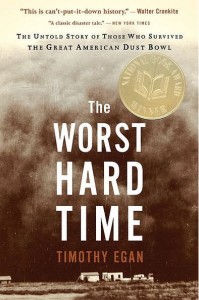 The stock market crashed on October 29, 1929, a Tuesday, the most disastrous session on Wall Street to date in a month of turmoil. Investors were relieved at the end of the trading day. ‘RALLY AT CLOSE CHEERS BROKERS; BANKERS OPTIMISTIC’ was part of the three-stack headline in the next day’s New York Times….On the High Plains, the Wall Street gyrations were a distant noise. The crash hurt rich people, city slickers, all those swells and dandies. It could not reach the last frontier of American farming …The newspaper in Boise City boasted that the ripple of the crash never touched the Panhandle in 1929. Instead, with record harvest, a new railroad, and even dreams of a skyscraper in town, the paper said, ‘Our ship is coming in.’
The stock market crashed on October 29, 1929, a Tuesday, the most disastrous session on Wall Street to date in a month of turmoil. Investors were relieved at the end of the trading day. ‘RALLY AT CLOSE CHEERS BROKERS; BANKERS OPTIMISTIC’ was part of the three-stack headline in the next day’s New York Times….On the High Plains, the Wall Street gyrations were a distant noise. The crash hurt rich people, city slickers, all those swells and dandies. It could not reach the last frontier of American farming …The newspaper in Boise City boasted that the ripple of the crash never touched the Panhandle in 1929. Instead, with record harvest, a new railroad, and even dreams of a skyscraper in town, the paper said, ‘Our ship is coming in.’
While prairie families may not have owned stock, they did own wheat, and it was starting to follow the course of the equities market. On Wall Street, people put 10 percent down to borrow against the future growth of a stock; in Kansas a dryland wheat farmer did the same thing – gambling on grain. The 1928 crop had come in okay, the price holding at $1 a bushel at the end of the year. Most people had anticipated $1.50 wheat; some even talked of the $2 yield they had been getting at the start of the decade. There was a drought elsewhere, covering Maryland and the Carolinas all the way to Arkansas, that should have pushed up prices. [pgs 73 and 74]
Frankly, to write about the serious nature of the water shortage in California and other parts of the nation right now, or how this will alter the nations food supply, it is as hard for me to fathom as the lives of those who lived through the Dust Bowl of the 1930s. I am still isolated from these issues today, as my daily life allows me to find food at numerous grocers, and water is in abundant supply here in North Texas.
Yet whether farmers in 1929 or recent years, these realities are very real and personal.
From reading and writing so much history over the last decade, I am very aware that I would be extremely foolish if I thought that the world around me was not going to change, and change drastically.
On the other side of the world, water has continued to become an extremely critical and shrinking resource for both the Jews and Arabs in the Middle East. Whether Syria, Jordon, and Israel depending on the limited resources from the Jordan River, or Turkey, Syria, and Iraq depending on the limited resources of the Tigris and Euphrates, the life giving force of water continues to shrink in quantity, placing entire populations under extreme pressure.
I wonder as I look at the world as it exist today, about a world in the future where water is far more abundant.
“And it shall to pass in that day, that living waters shall go out from Jerusalem: half of them toward the eastern sea, and half of them toward the western sea; in summer and winter it shall be.” [Zechariah 14:8, A Hebrew English Bible according to the Masoretic Text]
“He [GOD] will wipe every tear from their eyes. There will be no more death or mourning or crying or pain, for the old order of things has passed away.” [Revelations 21:4, New International Version of the Bible]
A Curious Mind

